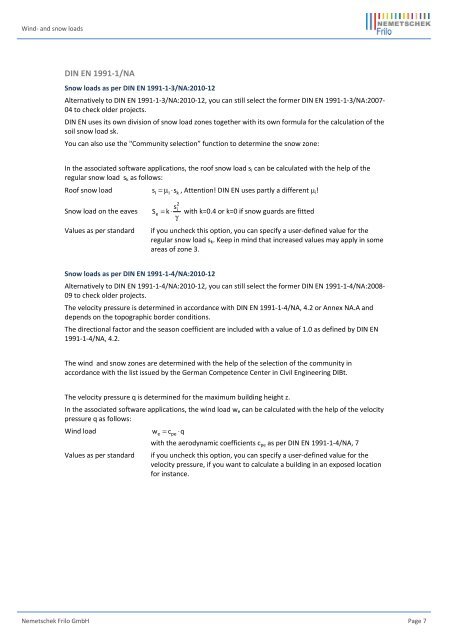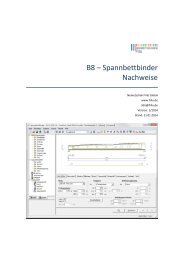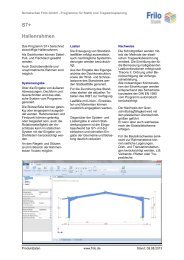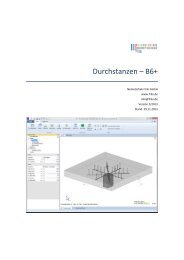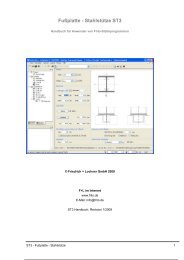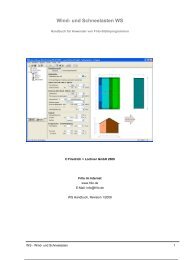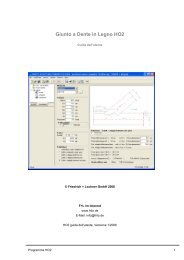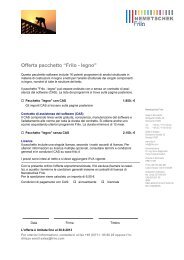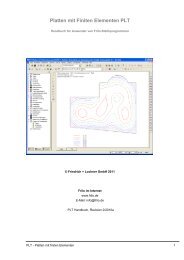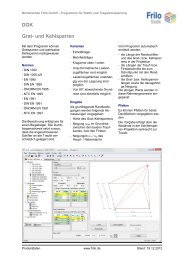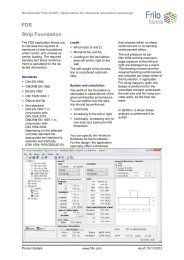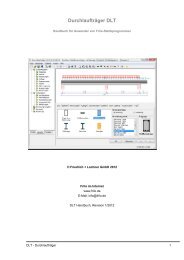Wind and Snow Loads - Frilo
Wind and Snow Loads - Frilo
Wind and Snow Loads - Frilo
You also want an ePaper? Increase the reach of your titles
YUMPU automatically turns print PDFs into web optimized ePapers that Google loves.
<strong>Wind</strong>- <strong>and</strong> snow loads<br />
DIN EN 1991-1/NA<br />
<strong>Snow</strong> loads as per DIN EN 1991-1-3/NA:2010-12<br />
Alternatively to DIN EN 1991-1-3/NA:2010-12, you can still select the former DIN EN 1991-1-3/NA:2007-<br />
04 to check older projects.<br />
DIN EN uses its own division of snow load zones together with its own formula for the calculation of the<br />
soil snow load sk.<br />
You can also use the "Community selection” function to determine the snow zone:<br />
In the associated software applications, the roof snow load si can be calculated with the help of the<br />
regular snow load sk as follows:<br />
Roof snow load si =mi◊ sk,<br />
Attention! DIN EN uses partly a different i!<br />
<strong>Snow</strong> load on the eaves<br />
2<br />
si<br />
Se= k◊<br />
with k=0.4 or k=0 if snow guards are fitted<br />
g<br />
Values as per st<strong>and</strong>ard if you uncheck this option, you can specify a user-defined value for the<br />
regular snow load sk. Keep in mind that increased values may apply in some<br />
areas of zone 3.<br />
<strong>Snow</strong> loads as per DIN EN 1991-1-4/NA:2010-12<br />
Alternatively to DIN EN 1991-1-4/NA:2010-12, you can still select the former DIN EN 1991-1-4/NA:2008-<br />
09 to check older projects.<br />
The velocity pressure is determined in accordance with DIN EN 1991-1-4/NA, 4.2 or Annex NA.A <strong>and</strong><br />
depends on the topographic border conditions.<br />
The directional factor <strong>and</strong> the season coefficient are included with a value of 1.0 as defined by DIN EN<br />
1991-1-4/NA, 4.2.<br />
The wind <strong>and</strong> snow zones are determined with the help of the selection of the community in<br />
accordance with the list issued by the German Competence Center in Civil Engineering DIBt.<br />
The velocity pressure q is determined for the maximum building height z.<br />
In the associated software applications, the wind load we can be calculated with the help of the velocity<br />
pressure q as follows:<br />
<strong>Wind</strong> load we = cpe◊ q<br />
with the aerodynamic coefficients cpe as per DIN EN 1991-1-4/NA, 7<br />
Values as per st<strong>and</strong>ard if you uncheck this option, you can specify a user-defined value for the<br />
velocity pressure, if you want to calculate a building in an exposed location<br />
for instance.<br />
Nemetschek <strong>Frilo</strong> GmbH Page 7


